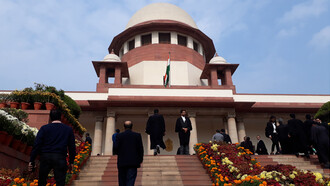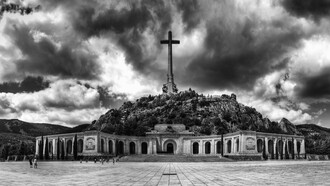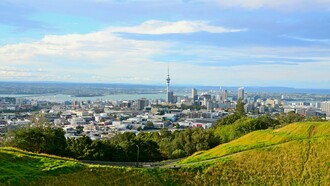Morocco Agriculture Ministry adopted the “Green Generation 2020-2030” plan. According to the Moroccan Minister of Agriculture, Marine Fisheries, Rural Development, and Water and Forests, Mr. Aziz Akhannouch, this plan is a new strategy based on capitalizing the achievements made by the Green Morocco Plan, through the adoption of a new vision of the agricultural sector, the consecration of new governance and the provision of modern means to the sector.
The achievements were made under the Green Morocco Plan, launched by the Sovereign in 2008, and, namely: the signing of 19 program contracts, the implementation of 12 regional agricultural plans, the creation of four new agencies, the entry into force of 4,500 legal texts, and more than 34 billion DH mobilized by international funding.
At the macroeconomic level, the green plan has enabled the multiplication of GDP-Agriculture and agricultural exports, as well as it has increased the volume of investments, and has enabled the creation of new job vacancies and has also increased coverage rates for food needs
In regard to sustainability, the Plan has favored the saving of irrigation water, the consolidation of agricultural resilience and the decline in rain-fed agriculture, in addition to the impetus of a dynamic of integration small and medium-sized agriculture, benefiting 2.7 million farmers.
Morocco green generation plan will rely on the young farmers
The Moroccan agricultural sector aims to reach a new level in its development, observing that the new agricultural strategy is based on two main foundations, namely the enhancement of the human element, in accordance with the Royal High Guidelines, and this through the emergence of a new generation of agricultural middle class (350,000 to 400,000 households), and the birth of a new generation of young entrepreneurs, through the mobilization and development of a million hectares of land collective and the creation of 350,000 jobs for young people.
This middle class and these young farmers will also be able to use a new generation of more innovative agricultural organizations and benefit from new support measures enabling them to strengthen their skills.
The second foundation of this new strategy relates to the pursuit of the development dynamic of the sector by promoting human and social development.
For this, the new vision provides for the consolidation of agricultural sectors, with a view to doubling exports (50 to 60 billion DH) and GDP-agriculture (200 to 250 billion DH) by 2030, improving product distribution process through the modernization of 12 wholesale and traditional markets.
It is also about strengthening the resilience and sustainability of agricultural development, as well as improving the quality and capacity for innovation, the granting of approvals to 120 modern slaughterhouses and the strengthening of health control.
The implementation of this strategy will require an annual increase in the sector's budget of almost 2.5 pc starting from 2020.
Morocco deteriorated forests will improve production chain
Green Generation Plan gives special importance to forest areas, which is estimated with 9 million ha, with the overall of their environmental, economic and social function.
The Moroccan forest is in a dilapidated state, due in particular to the deterioration of 17,000 ha of forest land each year, the low valuation of cork oak forests, the over-harvesting in fuel-wood and overexploitation of grazing areas.
This new strategy aims at making forests to be spaces for development, to ensure the sustainable management of forest resources, to adopt a participative approach involving users, to strengthen the productive capacities of forests, and to preserve biodiversity.
This strategy aims, by 2030, at repopulating 133,000 ha of forests, the creation of 27,500 additional direct jobs, in addition to improving the incomes of the production chains and the economy tourism to reach an annual market value of 5 billion DH.
To do this, the new strategy will revolve around four main axes, namely the creation of a new model based on a participative approach associating the populations with management, the development of forest areas according to their wealth, the promotion and modernization of forest professions through the creation of modern forest nurseries and the introduction of the digital tool in the management of the sector, and finally the institutional reform of the sector via the qualification of human resources, the establishment of a pole of training and research, and the creation of a Water and Forests Agency and a Nature Conservation Agency.
This strategy also provides for the development and enhancement of the ten national parks, with a view to ensuring economic and social development with full respect to the natural, cultural and territorial heritage.
Morocco Green Plan will go with the regions’ assets
The Moroccan Minister of Agriculture underlined that the agricultural and forest strategies, will be implemented starting from 2020, in particular at the territorial level according to the specificities and assets of each region, and this in coordination with all stakeholders, according to the principles of good governance in terms of monitoring and evaluation of investors as well as efficiency and yield indicators, expressing the wish to see them set up as a real development lever.
The vision of the agricultural sector that was developed in accordance with the Royal High Orientations absorbed in the speech of the king on the occasion of the opening of the 1st session of the 3rd legislative year of the 10th legislature (October 12, 2018).
The sovereign had called “for a consolidation of the achievements made in the agricultural field and for the creation of new activities generating jobs and incomes, in particular in favor of young people in rural areas”, with a view to “favoring the emergence of an agricultural middle class, to consolidate its framework so that, ultimately, it can exercise its dual vocation of factor of balance and lever of socio-economic development, like the middle urban class and the key role assigned to it ”.















